Most kitchens in the UK are supplied with one very important appliance – a kettle. It is the go to vessel to prepare a staple in England’s everyday life – the mighty cup of tea. Many people use kettles to prepare their morning coffee, rice and much more. When you consider this, it becomes somewhat of a puzzle why so rarely people talk about cleaning their tea kettle. It is an area of domestic chores that homeowners often overlook. Stubborn limescale just creeps on the kettle until it starts spoiling the food and drinks prepared in it. Once you start looking for ways to remove limescale, you are going to realize that it is a tough job unless you want to use harsh chemicals. It is, however, not an impossible mission. There are a few homemade remedies to remove limescale build up if you take the time to clean your kettle regularly. Another effective homemade remedy is a lemon and water solution, which not only removes limescale but also freshens the kettle’s interior with a pleasant scent.
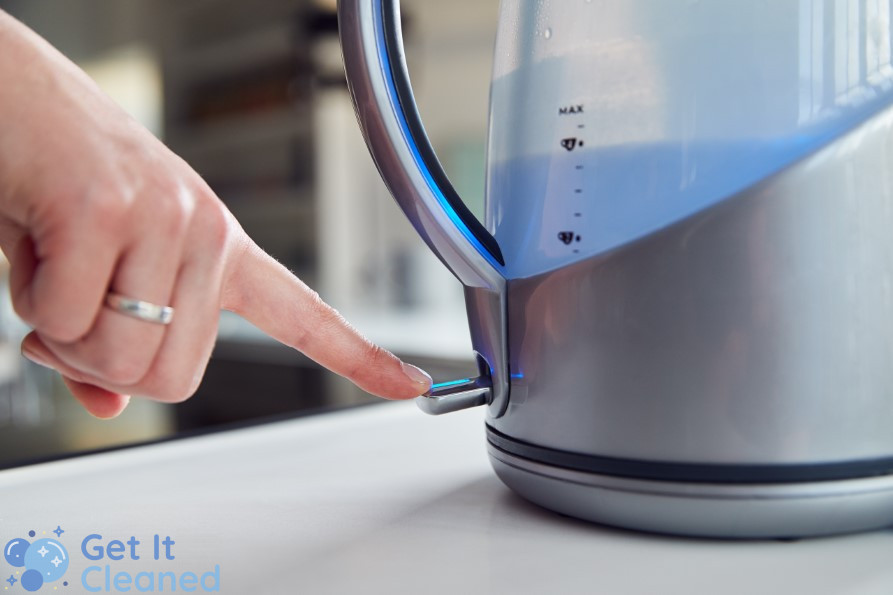
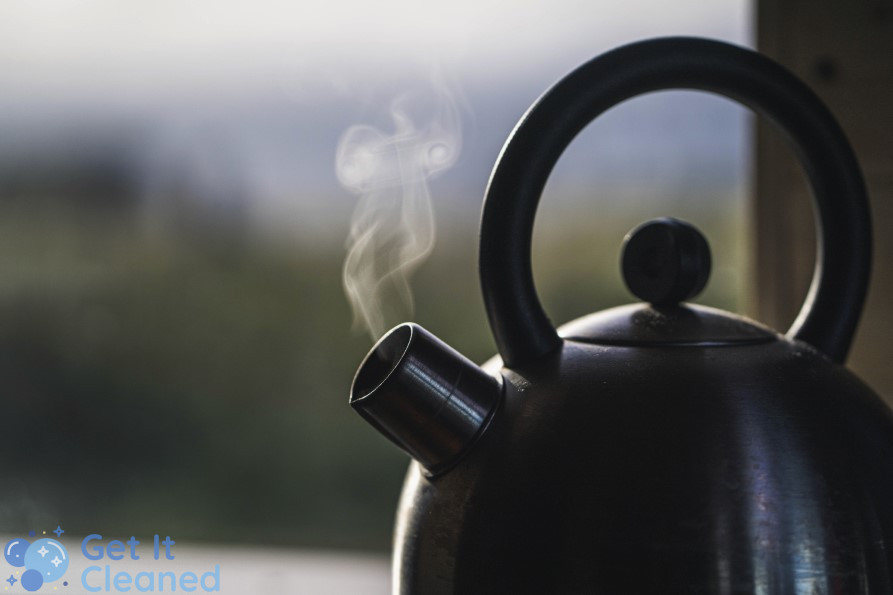
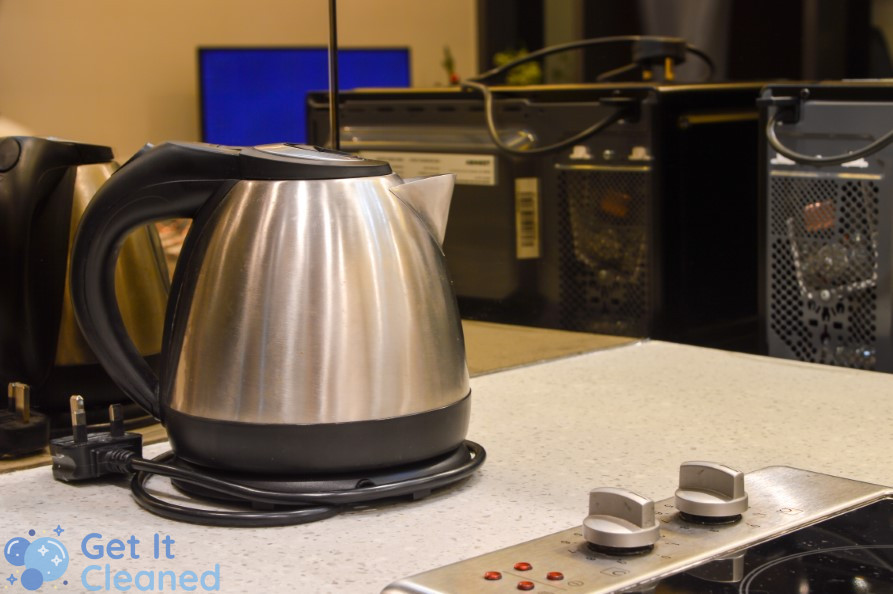
What is limescale?
Textbooks call limescale also lime, calcium carbonate, and scale. It is what makes hard water and looks like a chalky white deposit that sticks to the inside walls and edges of your kettle when hard water evaporates. But limescale forms when you use soft water as well – it will just take a little longer for the deposits to form limescale build up. In addition to regular and electric kettles, limescale often forms in boilers, heat exchangers and other household equipment. These buildups don’t only ruin the taste of your morning coffee. They reduce the efficiency of your appliances, and can even cause them to malfunction.
How to descale a kettle with distilled white vinegar
You will need to unplug the electric kettle and prepare enough hot, or even boiling water, and white vinegar to remove limescale from your tea kettle. Distilled white vinegar will produce the best results. That’s because the process of making distilled white vinegar includes distilled water that lacks the compounds that actually create limescale. The simple steps to follow are:
- Check if tea kettle is unplugged from the cord.
- Fill up the kettle with equal parts of white vinegar and hot water. It needs to be ¾ full.
- Close the lid, plug the kettle and bring the water to a boiling point. Using hot water speeds up the process.
- Pour the white vinegar mixture in the sink and use a damp cloth to rinse the limescale from the inner surfaces of the kettle. Look at bottom of the kettle where the heating element is. It is likely there is a serious build up around it.
- This last step can be skipped, but it is best that you go through it – fill the kettle with plain water and boil it again. Rinse completely to remove the distinct odor of white vinegar before you start preparing your tea or coffee.
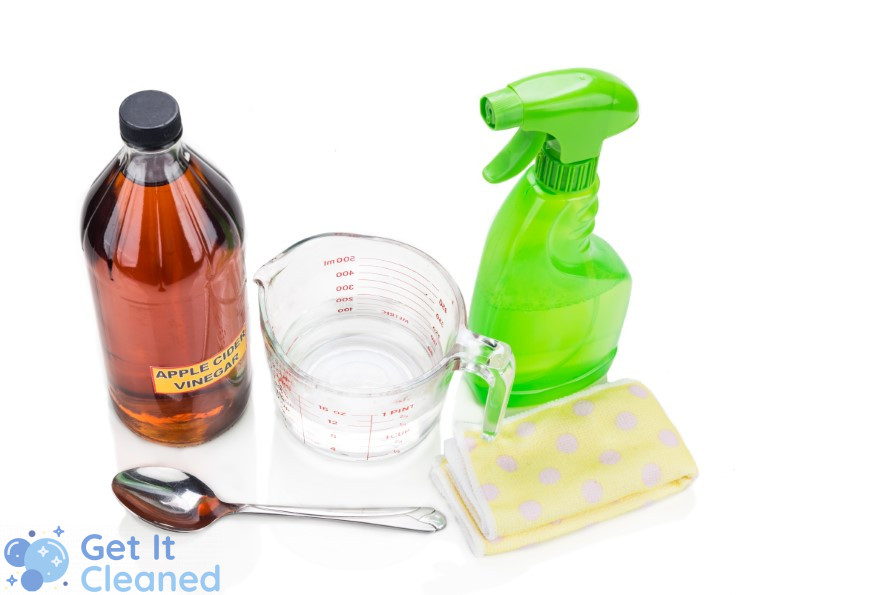
Is it safe to boil vinegar in an electric kettle?
Yes, it is completely safe. You simply need to remember that the kettle is primarily designed for boiling water, so you should always pour a mixture of white vinegar and water in it. Pouring vinegar only might lead to the electric kettle malfunctioning. If you are worried about damaging your appliances instead of successfully descaling them, you can use other homemade methods that have proven to work.
Baking soda and water method
It’s possible you prefer to use another method apart from the white vinegar mixture. If you are worried about lingering smell, the bicarbonate of soda and cold water method might be a good choice. Mix half a liter of cold water with a tea spoon of soda. Put the soda and water solution into the kettle and boil it for a quarter of an hour. Let the soda solution cool off for another quarter of an hour. Empty the kettle and rinse with cold water. This method comes particularly in handy when descaling a glass kettle.
Experts recommend descaling kettles with soda with another method as well. Form a paste by mixing a small amount of water with a tablespoon of soda. Rinse the surfaces affected by limescale with the mixture by using an old toothbrush to spread the newly formed paste. Let the soda mixture sit for half an hour and rinse with cold water until no limescale remains.
Cleaning a kettle using lemon and water
Half a lemon, some water, or lemon juice has been the go-to homemade cleaning solution for homemakers for centuries. The acidity of lemon juice effectively combats limescale and has antibacterial properties, making it a preferred choice over harsher chemicals. The mixture works very well for electric and other types of kettles. The citric acid from the lemon loosens the limescale build ups. The method works for both the interior and exterior of your kettles.
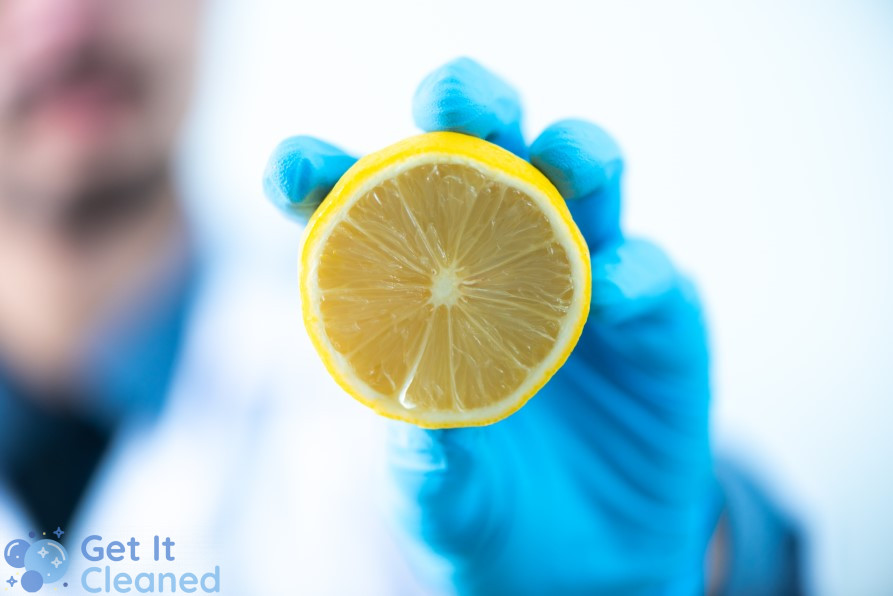
To descale your kettle with lemon and water:
- Squeeze half a lemon, or just use a tablespoon of ready citric acid directly into the kettle.
- Pour enough water to cover the bottom.
- Boil the water and turn the kettle off.
- Let it sit for half an hour.
- Pour the mixture into the sink.
- Rinse with fresh water. Scrubbing works for more serious limescale build ups.
Descale your kettle using descaling powder
Most commercially available brands of descaling powder don’t contain harsh chemicals. They won’t pose a threat to yours, and your family’s health. But they demand quite a bit of scrubbing to achieve the same results in descaling as the homemade solutions like white vinegar and baking soda. If scrubbing doesn’t put you off, you can buy the most generic descaling powder you find at the store. Read the instructions on the label before you clean and descale your kettle. There wouldn’t be a problem using descaling powder if you prefer it over the homemade remedies.

